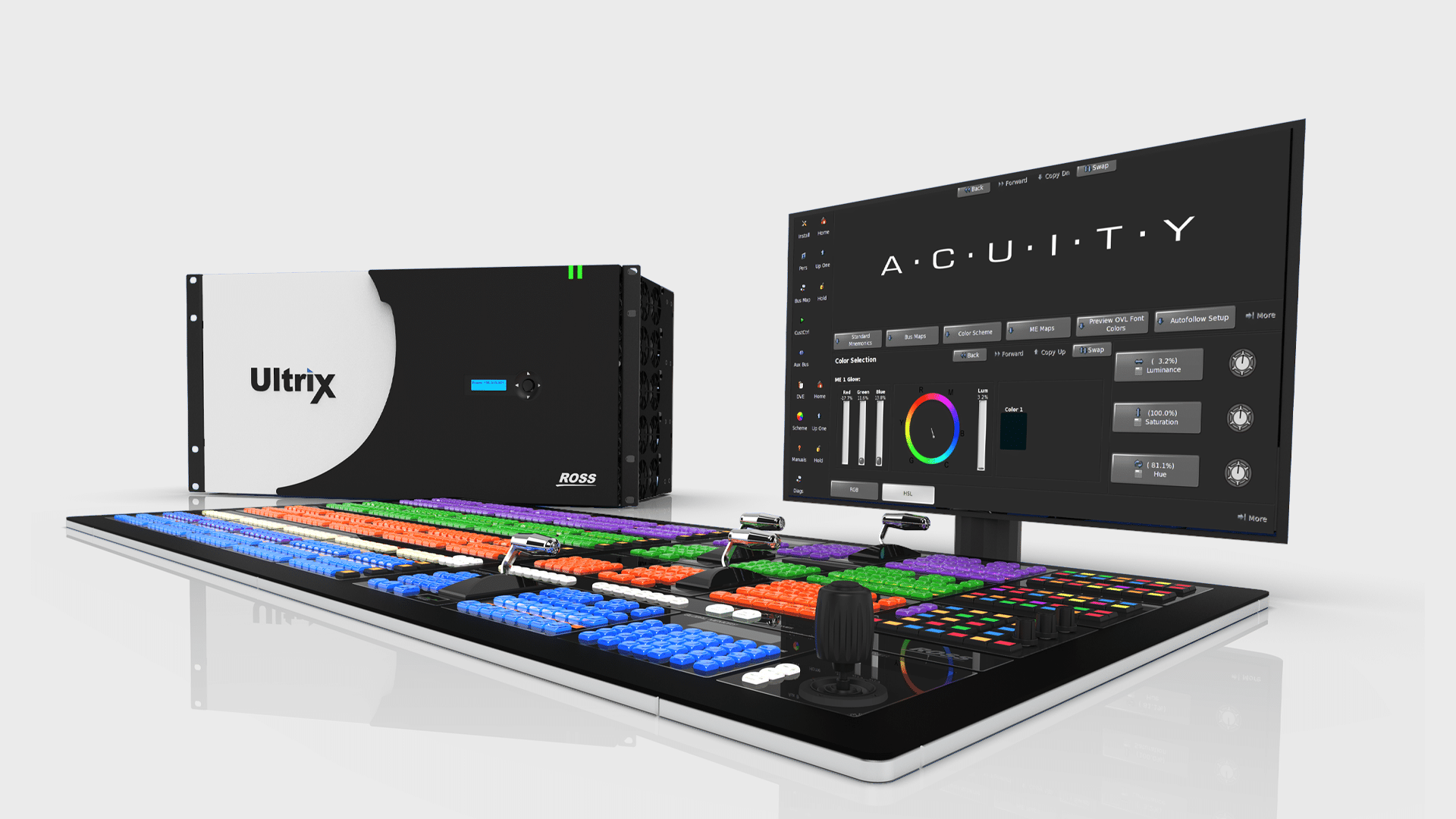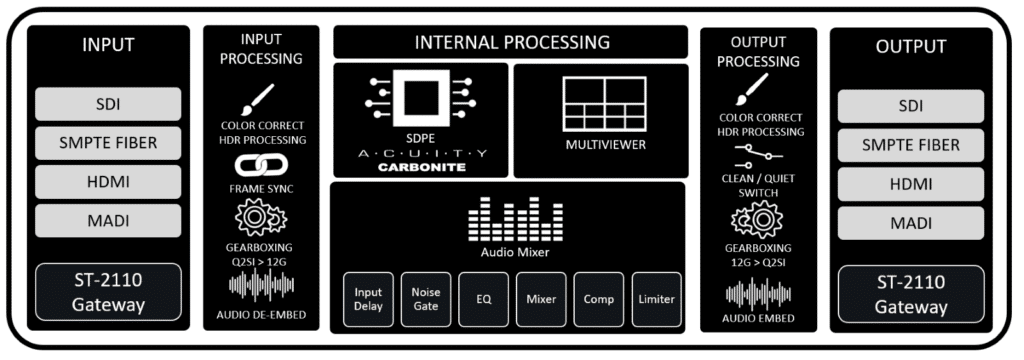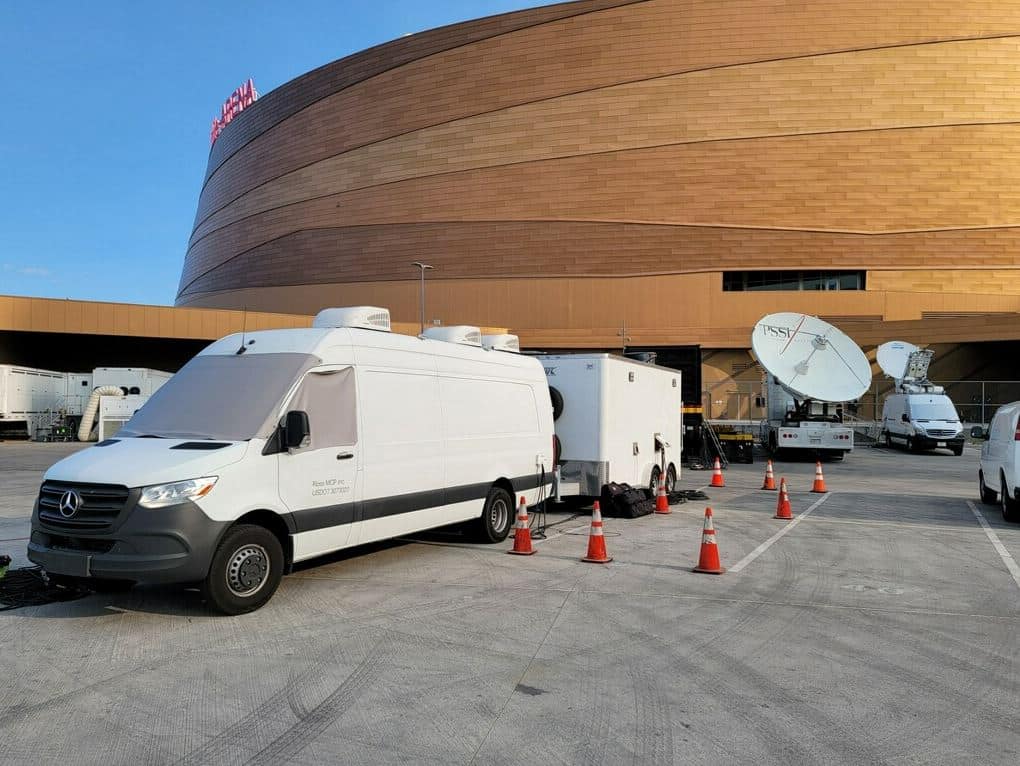May 6, 2024 - Ross Video Team, Technology
IP Switchers


The broadcast media industry is in an unprecedented state of change, with new technologies and workflows evolving at a staggering pace. One aspect of this change is the migration of facilities to IP-based ST 2110 infrastructure. These installations usually wish to maximize the potential of their IP networks by incorporating as much IP-native equipment as possible, including the production switcher. When considering a production switcher, it is essential to understand how these devices work and how they integrate into your overall production facility.
Regardless of the interconnect, whether SDI or IP, most production switchers integrate their crosspoint matrices to switch sources during live production. For example, if the technical director selects “Camera 2”, that video is switched within the production switcher’s private crosspoint matrix (not at the SDI router or IP network stream). That allows predictable, fast switching required for live production, which is often not guaranteed by an external router or (often worse) an IP network.
At the edge of the switcher, the facility will provide all the sources required for a given production. This collection of sources may be hardwired to a fixed studio or fed via a router, where a salvo of sources can be recalled before each show. These external sources don’t typically change much in the middle of production, as all the switching happens inside the production switcher.
IP switchers are typically connected to the core switching matrix using high-bandwidth (100G or higher) interconnects. That provides an efficient conduit to route all the sources to the switcher and receive all the outputs from the switcher required for production. However, there are situations where the IP switcher needs to accept inputs from legacy SDI equipment or provide SDI outputs for monitoring, for example. It is also helpful for the IP switcher to integrate SDI I/O. Otherwise, top-of-rack IP gateways can be used to connect the SDI equipment to the IP network.
Ultrix Acuity and Ultrix Carbonite are class-leading production switchers that leverage the power of Hyperconverged integration. With a range of chassis sizes, multiple production switchers can be incorporated into a single chassis, sharing any combination of I/O. Choose Carbonite switchers for small to midsize productions, or the powerful Ultrix Acuity with 8MEs to satisfy the needs of the largest productions and events. These switchers leverage the internal crosspoint matrix on the Ultrix platform to perform real-time crosspoint switching from the collection of sources connected to the I/O blades.
Ultrix is a modular platform that allows up to 16 blades. Each slot can be used for I/O or to accommodate an SDPE (Software Defined Processing Engine) blade. That will enable systems up to 288×288, up to eight Carbonite switchers, an 8-ME Acuity, or any combination in between.

Figure 1. Mix and match I/O and production switchers to meet your production needs.
Choose I/O cards for ST 2110 (including NMOS), SDI or Fiber. Additionally, flexible AUX ports allow for the integration of additional SDI, HDMI, Fiber or MADI. With native support from SD to UHD, Ultrix enables your production to use any format carried on any transport. That allows the IP switcher platform to integrate easily with non-IP devices. Build your Ultrix with the combination of I/O that matches your facility needs and expand it in the future as your needs grow.

But Ultrix Acuity and Ultrix Carbonite are more than just switchers with flexible I/O. This Hyperconverged platform also integrates powerful processing, including frame sync, color correction, HDR conversion, audio embedding, and more. Add integrated audio mixing to build a complete production center and flexible multiviewers (up to 48 heads!) to cover all your monitoring needs. This simplifies the overall facility design, with fewer interconnects and streamlines operational workflows.
Choosing Ultrix Acuity or Ultrix Carbonite as your IP switcher solution provides seamless integration into your ST 2110 IP facility and supercharges it with hyperconverged technology. Gain the added benefits of integrated processing, multiviewers, and IP gateways in a single chassis to reduce your solution footprint and power and network I/O requirements while simplifying your configuration, maintenance, and operational workflows.
Ready to explore what Hyperconverged Solutions can do for your live production? Click here to schedule your complimentary consultation.

Give your clients exceptional broadcast coverage and quality by minimizing Outside Broadcasting (OB) van failure and disruptions. Mobile broadcasting equipment — like any technology — needs proper …

One of the most significant challenges for outside broadcasters is maintaining the same high-quality production standards viewers are accustomed to when filming with a mobile unit. Ross …
We’ll put you in touch with a member of our team to discuss your specific needs.